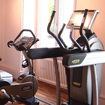Copy of Chocolate, count and noncount nouns
Intermediate, B1 level
Description
Materials
Main Aims
-
Reading for details
Subsidiary Aims
-
Using count and non count nouns to speak about food preferences
Procedure (29-50 minutes)
The teacher draws a fat girl on the board with some spots on her face. She tells them that she is her cousin and she is very sad, and she asks them why she is sad? If they can't produce the word chocolate she can draw a Kit Kat in her hand. She tries to elicit the word "chocolate addict" from the students.
The teacher asks them if they are chocolate addicts or chocoholic. She tries to make sure that the students understand what the terms mean. They briefly discuss the subject.
Then, she tells them to read the reading silently and decide if they are chocolate addicts or not. She tries to give clear instruction. While they are reading individually, the teacher walks around the classroom to help the ones who may have a hard time understanding. Then, they start asking and answering each other 8 questions of the reading text which leads to the students' getting familiar with their partner's chocolate eating habits. The teacher monitors them and helps them when the need demands. Then, she asks them to talk about their friends' chocolate eating habits.
She asks them if there any questions about the reading text they want to ask. In order to get the students move, she gives them some names and tells them to come to the board and discuss the question" Could you live without chocolate?" in pairs. What the teacher does at this stage is monitor and help them keep on talking. After they are done, they are told to take their seats.
The teacher tells them to read the statements and think about tem and write if they are True or False. The instruction needs to be clear enough for them to understand. What the teacher do is monitor to see if they have a hard time understanding some sentences. Having done the True/False part, they are told to check the answers in pairs. They are monitored by the teacher at this stage too. Then, the teacher asks them what they think of number 1 and plays the CD for them to se if their guess was right or not. She continues the same procedure throughout the exercise and clarifies the points in listening if the students need.
The teacher divides the board into two and writes the words countable and uncountable in each column. Then, she divides the class into two groups and gives them some pieces of paper, on which some nouns are written. She gives them some time to talk and decide where each piece of paper goes. The teacher monitors them to help when necessary. Then, she asks them to come to the board and stick them on the board. Making sure that they got the point, the teacher says, " Chocolate is good for you." They drill this sentence. She, then, says," Chips are good for you." and make tem repeat the sentence. She writes both sentences on the board and tries to elicit the rules from the students. She writes the verb "is" and "are" in red. Then, she tells them to work in pairs and substitute the nouns for chocolate. She tries to make them understand the instructions. After they work in pairs, she tells them to come to the board and gives them some pieces of paper reading 'is' and 'are' and tells them to match them with the nouns they have already practiced with. Then, she tells them to take their seats and discuss which statement they agree with. The teacher monitors the whole class and helps them if necessary.

